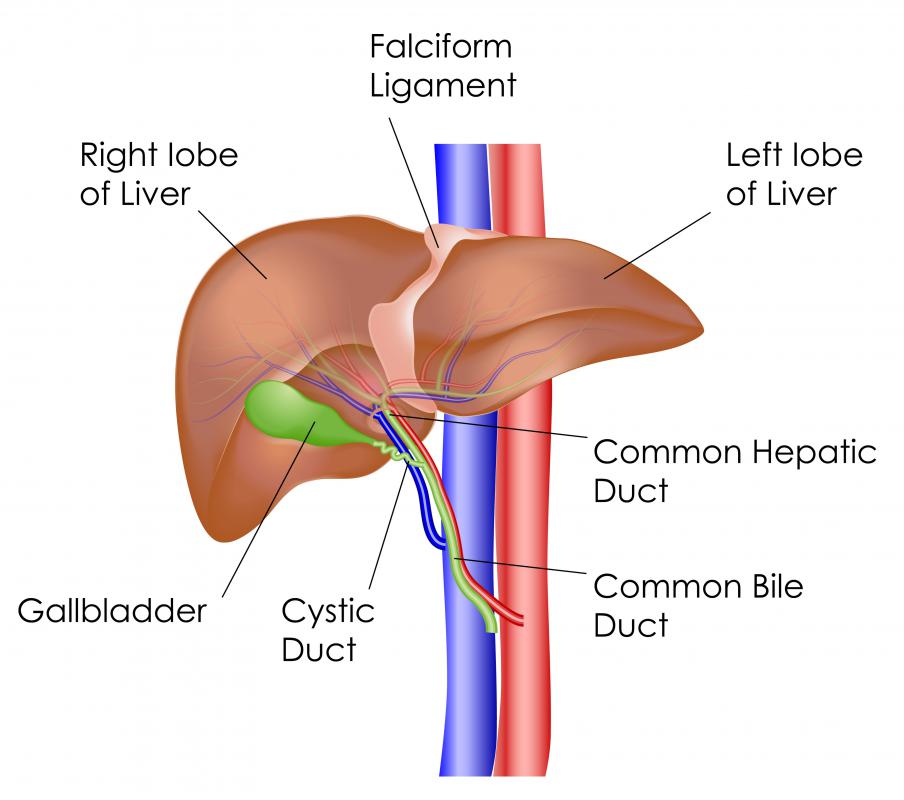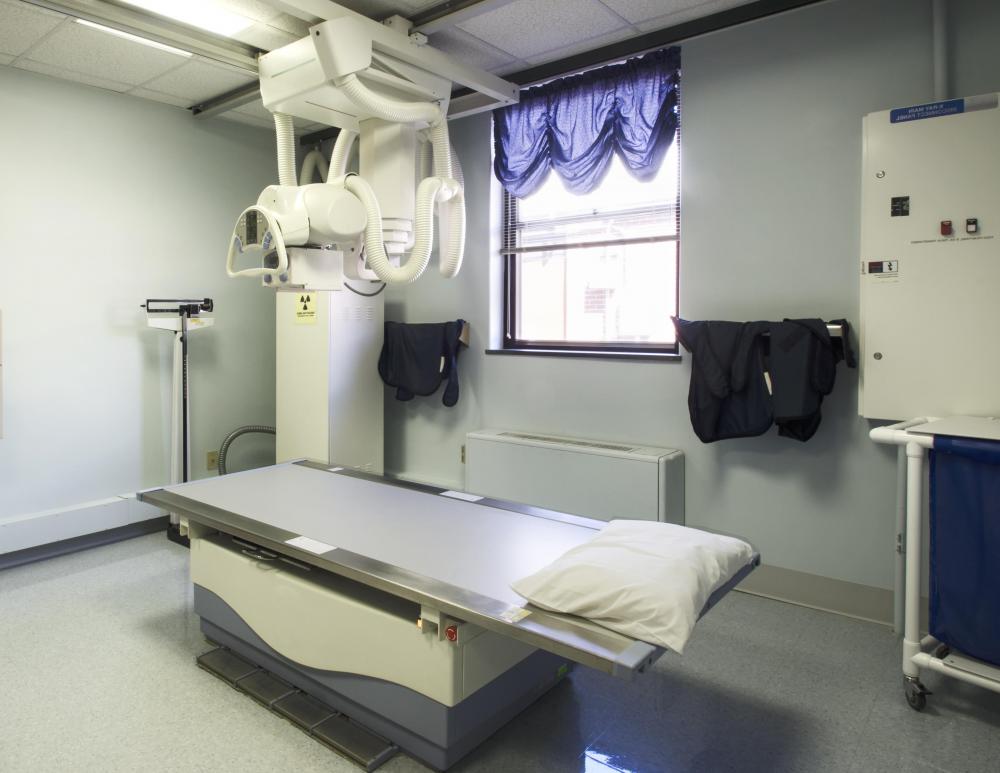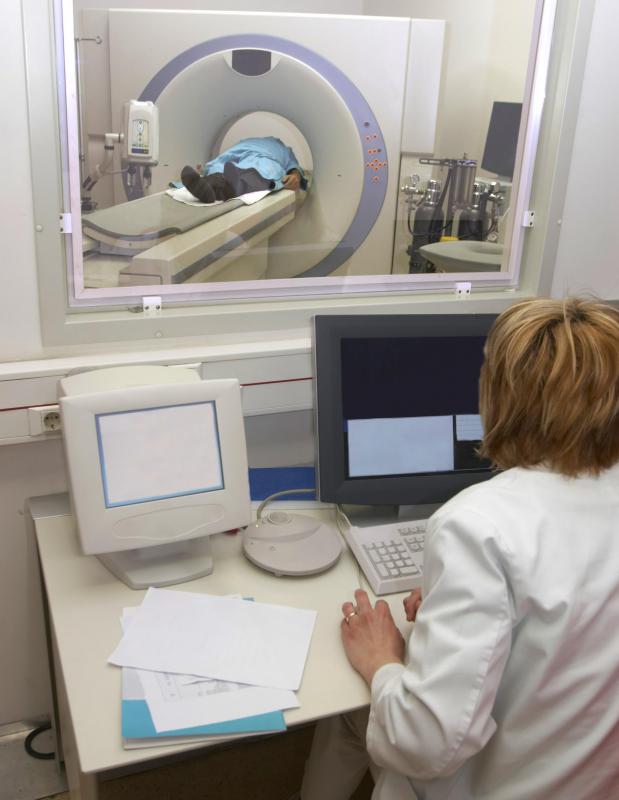At WiseGEEK, we're committed to delivering accurate, trustworthy information. Our expert-authored content is rigorously fact-checked and sourced from credible authorities. Discover how we uphold the highest standards in providing you with reliable knowledge.
What Is a Percutaneous Cholangiogram?
A percutaneous cholangiogram is a medical image taken of the bile ducts to determine if they are blocked. The bile ducts allow bile to be transported from the liver to the small intestine or the gallbladder. If these ducts become blocked, bile can accumulate and back up into the liver. To generate a percutaneous cholangiogram, dye is injected into the bile ducts, and how that dye moves is examined on an x-ray.
Bile, a dark yellow color substance that functions to digest fats and remove waste from the body, is secreted by specialized cells in the liver. It leaves the liver and moves through the left and right hepatic ducts, which then merge together. From this common hepatic duct, bile can flow into the small intestine or enter the gallbladder and be stored for future use.

If a gallstone develops in the gallbladder and travels into the bile duct, it can cause a blockage; tumors and inflammation can also lead to blocked bile ducts. A physician may be able to determine the location of a blockage by examining the percutaneous cholangiogram of the bile duct system. The medical procedure that is done to generate this type of x-ray is called percutaneous transhepatic cholangiography. This procedure takes 30 minutes to one hour, and is done on an outpatient basis while the patient is awake.

To perform this procedure, an x-ray technician known as a radiologist has the patient lie on his or her back. A local anesthetic is injected into the skin of the right side of the abdomen to numb the area. The radiologist then inserts a needle through the ribs and directly into one of the bile ducts in the liver; an iodine dye is then slowly injected into the bile ducts. This iodine dye is visible on the x-ray and will allow the radiologist to view the path that bile would normally flow.

If the iodine dye is not flowing properly on the percutaneous cholangiogram, the medical professional may be able to locate a blockage on the x-ray monitor. He or she would then need to determine the appropriate treatment; in some cases, this procedure is immediately followed by a biliary drainage procedure. The medical professional may insert a drain to empty the bile into a small bag outside the body or into the abdomen. Another option would be to insert a stent that would open the bile duct and allow it to drain.
AS FEATURED ON:
AS FEATURED ON:














Discuss this Article
Post your comments